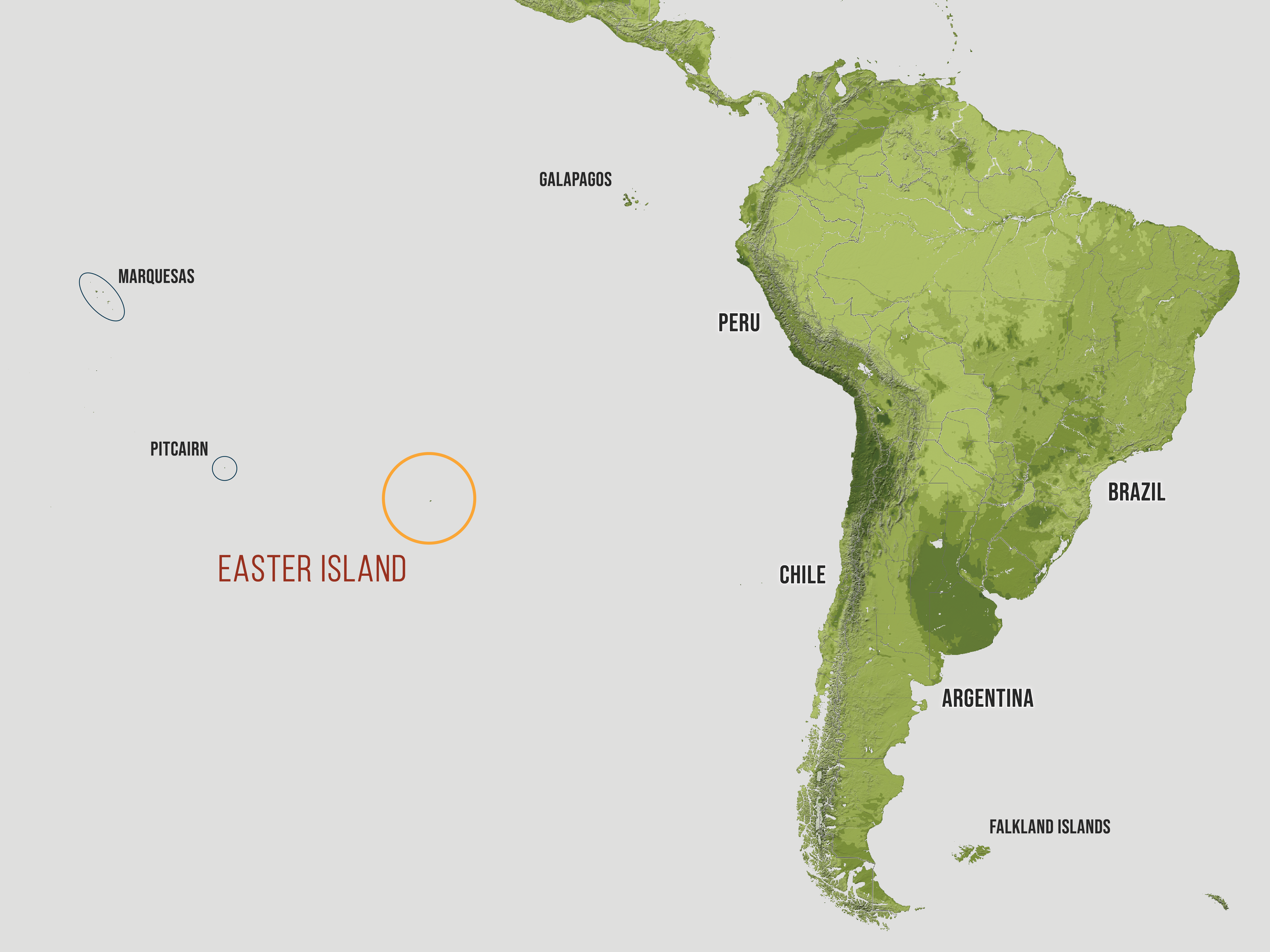
ORIENTATION
Easter island
Easter Island, or Rapa Nui, is one of the most remote inhabited islands on earth. It is a territory of Chile, and lies approximately 3,700 km off the coast of South America, forming the southeastern tip of the Polynesian triangle (along with Hawaii and New Zealand). To the west, the closest islands are the Pitcairn Islands, which lie around 2,000 km away. The island forms a long triangle, 24 km long and 12 km at its widest point
The island was first settled by Polynesians around 1,000 AD, and wasn’t discovered by European explorers until 1722, when Dutch explorer Jacob Roggeveen came across it on Easter Sunday. A later visit by Captain James Cook in 1774 resulted in greater attention to the island globally, and slowly, more and more people began to stop by.
Rapa Nui is renowned for being a mysterious place with highly unique cultural elements that have prompted extensive study and argument over the years. The first inhabitants of the island formed a society that developed over hundreds of years in near-isolation, allowing historians and archaeologists a rare view into a community, language, religion, and societal infrastructure that had very little input from the outside world. In the 1800s, however, the Rapa Nui civilization went through a rapid decline (described in more detail here), punctuated in the 1860s by the arrival of Christian missionaries and Peruvian slavers. The missionaries actively suppressed many long-honored religious and cultural traditions as they converted the locals to Christianity, and both groups introduced diseases such as smallpox and tuberculosis that decimated the local population. At its lowest point in 1887, only 111 native Rapa Nui were left alive, out of several thousand just a few decades before.
Today, Easter Island has a population of around 8,000 people of both Polynesian and Chilean descent. The economy of the island is almost solely based on tourism, though its remoteness still makes it a challenging place to visit. Anything not originating on the island has to be flown in, as the harbor is too small to accommodate cargo ships, which means that commercial items are extremely expensive. Agriculture provides sweet potatoes, taro, and many fruits for local consumption, and many Rapa Nui families still actively fish the waters around the island. In recent years, due in part to the increase in tourism, concentrated efforts have been put into documenting and preserving Rapa Nui culture, including its distinct language, local dance, cultural festivals and traditions, and handicrafts.



